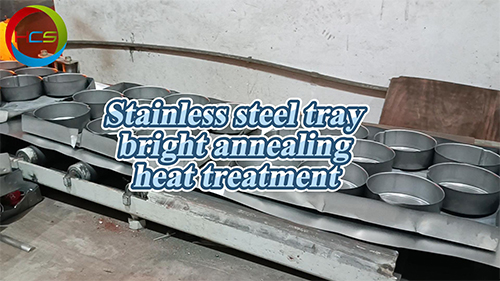Comparison of Stainless Steel Vessels Before and After Bright Annealing
Sep. 06, 2025
The following is an analysis of the possible contrasting changes in these metal parts before and after the annealing heat treatment:
1. Internal Microstructure
Before annealing:During the processing of metal parts, such as through cold rolling, stamping, and other processes, a large number of dislocations and lattice distortions are generated in their internal microstructure due to plastic deformation, forming fibrous or work-hardened structures. These defects place the metal in a high-energy state, resulting in an unstable microstructure.
After annealing:Through annealing heat treatment, the metal is held at an appropriate temperature, providing atoms with sufficient energy for diffusion and rearrangement. The internal microstructure transforms into equiaxed grains, with a reduced dislocation density and less lattice distortion, making the microstructure more uniform and stable.
2. Mechanical Properties
Hardness
Before annealing: Due to work hardening, the hardness of the metal is generally high. For example, the hardness of a metal part after cold rolling is much higher than that in the annealed state.
After annealing: With the transformation of the internal microstructure, the hardness of the metal significantly decreases, becoming softer, which is beneficial for subsequent processing operations such as cutting and bending.
Strength and Plasticity
Before annealing: Work hardening increases the strength of the metal to some extent but significantly reduces its plasticity. Metal parts before annealing may be relatively brittle and prone to cracking under external forces.
After annealing:The strength decreases, but the plasticity improves markedly. The metal can withstand greater deformation without cracking, enhancing its formability during processing.
3. Residual Stress
Before annealing:During the manufacturing process of parts, such as stamping and welding, residual stresses are generated within the metal. These residual stresses may cause issues such as deformation and cracking during subsequent use, affecting the dimensional accuracy and service life of the parts.
After annealing: The annealing process can effectively eliminate or reduce the residual stresses within the metal. Through atomic diffusion and recrystallization, the internal stresses in the metal are released, improving the dimensional stability and fatigue resistance of the parts.
4. Appearance and Surface Quality
Before annealing:The surface of the parts may have defects such as scratches and burrs generated during processing, with relatively high surface roughness.
After annealing:In some cases, annealing treatment may make the surface of the parts smoother. Meanwhile, due to the elimination of internal stresses, the flatness of the parts may improve, reducing deformation issues caused by stresses.










